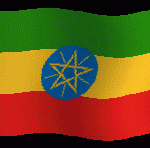Calendar
The Ethiopian calendar is much more similar to the Egyptian Coptic calendar having a year of 13 months, 365 days and 366 days in a leap year (every fourth year) and it is much influenced by the Ethiopian Orthodox Tewahedo Church, which follows its ancient calendar rules and beliefs. The Ethiopian calendar is always seven years and eight months behind the Gregorian (Western) and Eastern Orthodox Church calendars during September and December and eight years and four months behind during January and August.
Pope Gregory XIII reformed the Julian calendar due to the fact that Easter was drifting away from its springtime origins and so lost its relation with the Jewish Passover. Since 1582, the Gregorian (Western) calendar has become the religious, cultural and civil calendar for most of the world. Because of the ideological differences, the Ethiopian Orthodox Tewahedo Church did not accept the Gregorian calendar and continued to use their own calendar with lunar tables for calculating Easter, together with other religious and cultural holidays.
The date of Christmas in the Ethiopian calendar always falls on December 29, but this date is January 7 in the Gregorian calendar i.e. 13 days after the Roman Catholic and Protestant Churches have celebrated their Christmas. However, the date of Easter in the Eastern, Coptic and Ethiopian Orthodox Tewahedo Churches’ calendars falls 7 days after the Jewish Passover which date determines the Roman Catholic and Protestant Churches’ Easter.
Although the Julian, Gregorian, Coptic and Ethiopian calendars have the same number of days in a year, (365 days and 366 days in a leap year), the counting systems giving the number of days in each month, and number of months in a year, of the Julian and Gregorian calendars differ from the Ethiopian and Egyptian Coptic calendars. The Ethiopian and Coptic calendars consist of 13 months where the first 12 months have 30 days each, and the Last (thirteenth) month has 5 days (6 days in a leap year). The Gregorian calendar consists of 12 months with January, March, May, July, August, October and December having 31 days, April, June, September and November, 30 days and February having 28 days (29 days in a leap year).
The Ethiopian New Year falls on September 11 (September 12 in the leap year) in the Gregorian calendar but it is September 1 in the Ethiopian calendar. In Ethiopia the first month of the year is September and the last (thirteenth) month of the year is Pagumiene, which comes after August. Each month has 30 days (from September to August) and the thirteenth month, Pagumiene, has 5 days (6 days in a leap year).
Ethiopian time is 3 hours ahead of GMT (Greenwich Mean Time) and is equally divided into day and night, each consisting of 12 hours from sunrise to sunset and vice-versa.






Leave a Reply